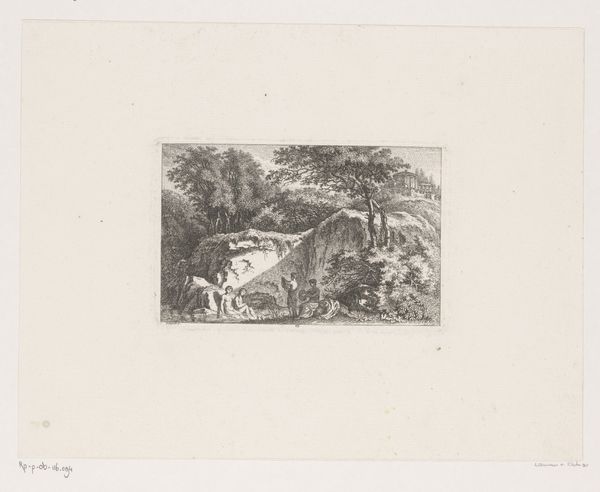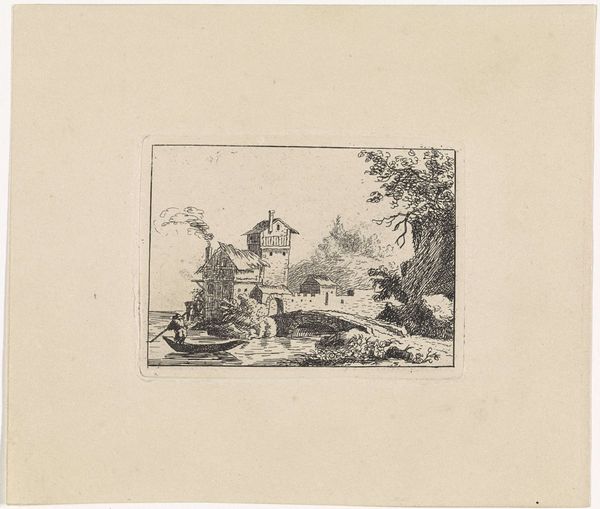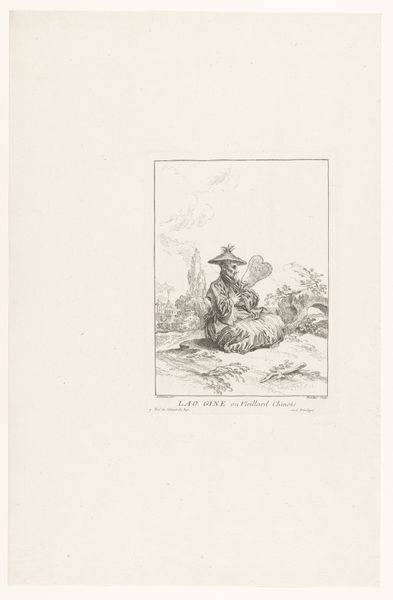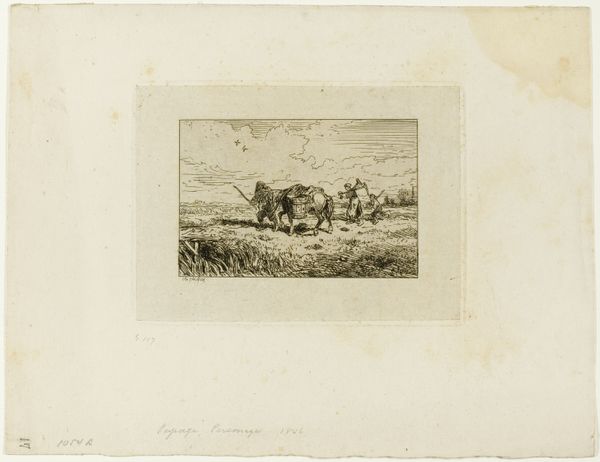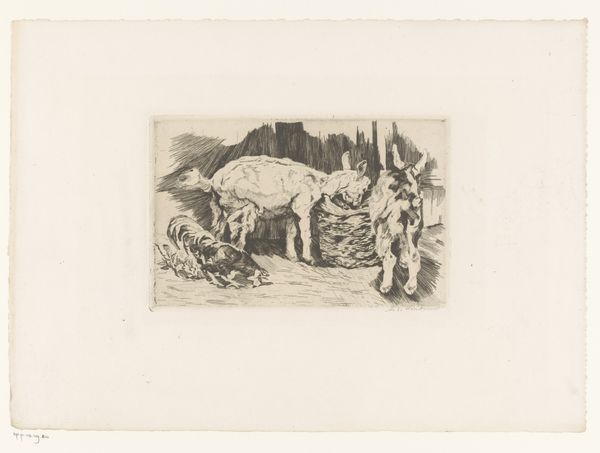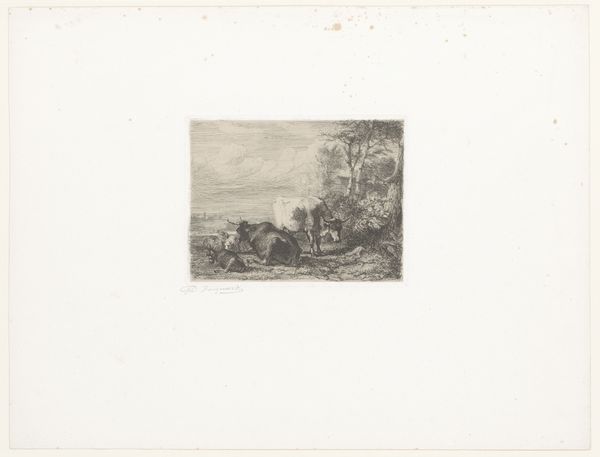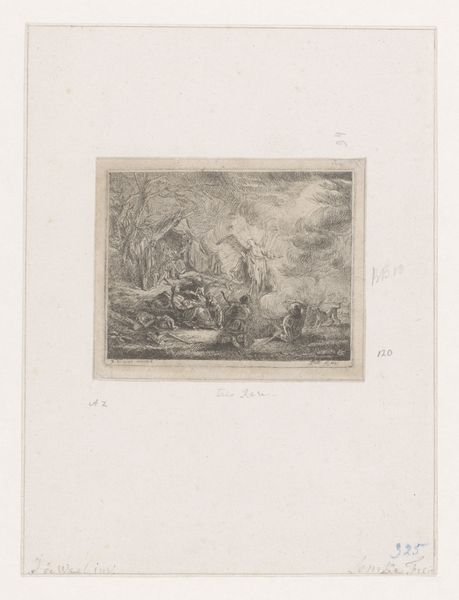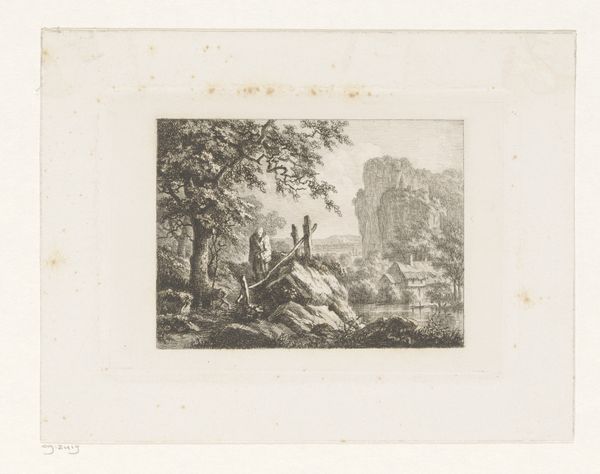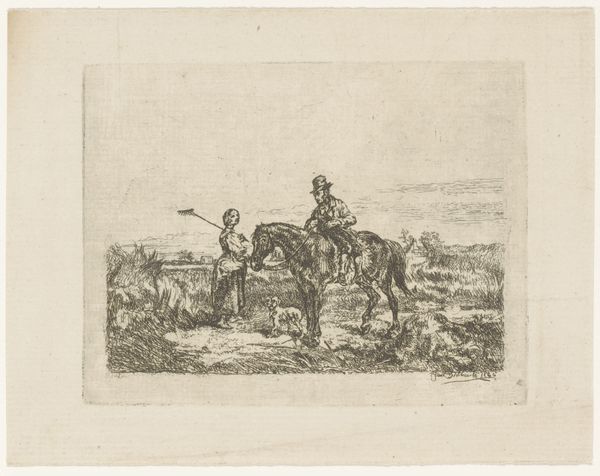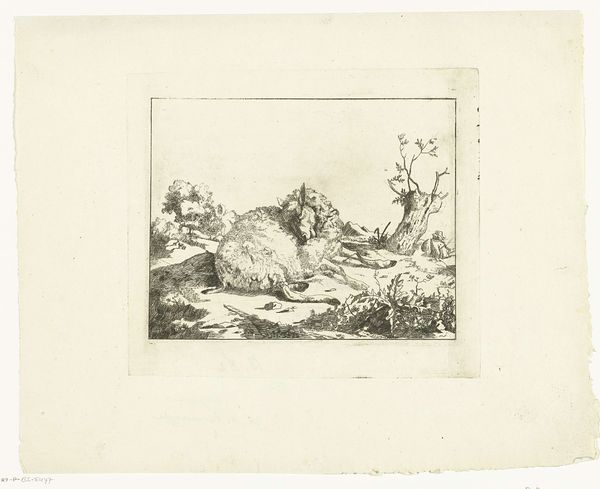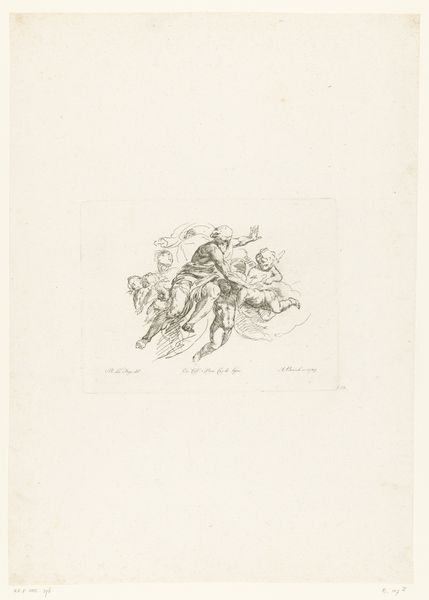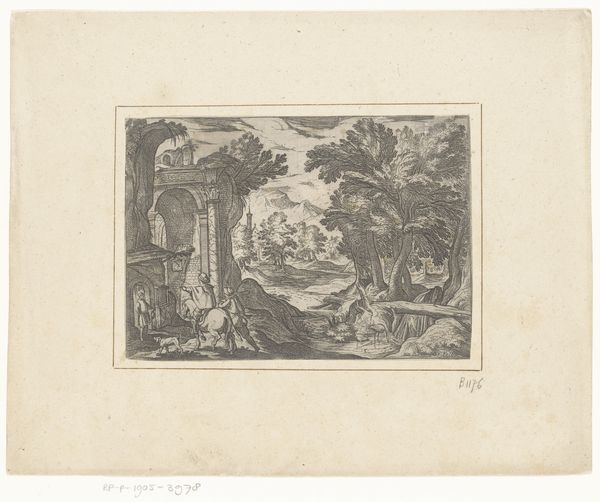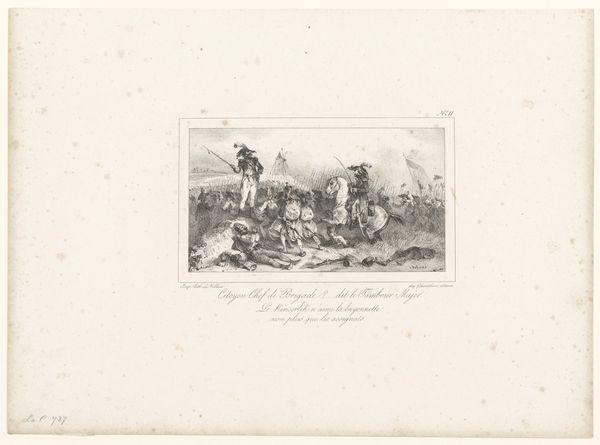
print, etching
#
photo of handprinted image
#
toned paper
#
light pencil work
#
ink paper printed
# print
#
etching
#
pencil sketch
#
old engraving style
#
england
#
ink colored
#
watercolour illustration
#
natural palette
#
watercolor
Dimensions: 4 1/8 x 6 15/16 in. (10.48 x 17.62 cm) (plate)13 1/2 x 17 1/2 in. (34.29 x 44.45 cm) (sheet)
Copyright: Public Domain
Curator: Looking at Frederick K. Taylor’s "Day's Hunting in the Fens," likely created sometime in the 19th century, one is immediately struck by the etching's delicate, almost fleeting quality. Editor: It's somber, isn’t it? The muted tones and sparse details contribute to a feeling of desolation. The composition emphasizes the isolation of the hunter and the fallen animal within this wide, empty space. Curator: Yes, and consider the historical context. The fens, marshy regions of eastern England, were undergoing significant transformation in the 19th century, with drainage and enclosure dramatically changing both the landscape and traditional ways of life like hunting. This print likely reflects a tension between the romanticized past and a rapidly modernizing world. Editor: Notice how Taylor uses a stark contrast of light and shadow to define forms—see how the subtle cross-hatching and varied line weights create a sense of depth despite the limited palette. Curator: Precisely. Hunting, traditionally an aristocratic pursuit, also had deep roots within rural working-class communities in England, so this depiction would resonate across social lines. The print served perhaps as a commentary on shifting social norms related to land use and privilege, especially during England's transformation with modernization and industrial growth. Editor: The linear nature of the composition guides our eye, the hunter acting as the dynamic axis juxtaposed with the fallen deer. The economy of line lends itself to capturing motion, yet the overall tone, as I mentioned, is rather mournful, isn't it? Curator: That melancholy seems entirely fitting considering the larger changes reshaping England's social fabric. Art like this provided a window into reflecting about transformations underway. Editor: Indeed. Looking closer reveals an intentionality, a method to Taylor's artistry capturing the stark English landscape. Curator: The print offered viewers then—and now—an opportunity to think about cultural and environmental change through the prism of artistry. Editor: A stark yet evocative portrayal of an evolving landscape, capturing hunting both as sport and metaphor.
Comments
No comments
Be the first to comment and join the conversation on the ultimate creative platform.

